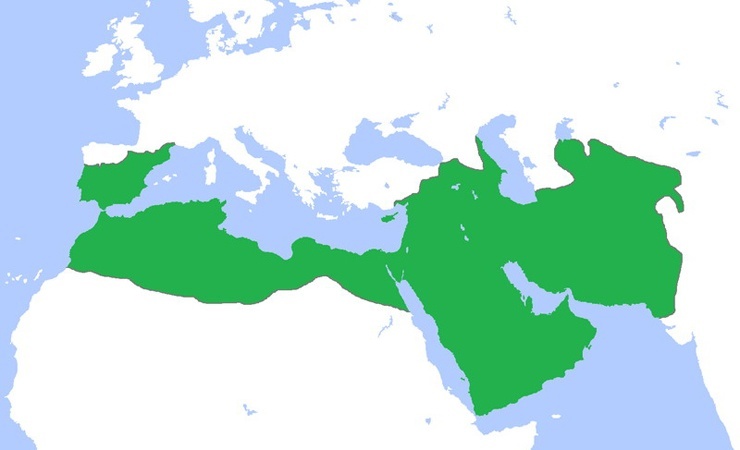Top 10 most dangerous snakes in the world
A person cannot be indifferent to snakes - observing them from a safe place causes delight, and close contact often turns into horror and panic. Snakes can be found on all continents with the exception of icy Antarctica. Snakes have always been the most dangerous creatures for humans, but only about 8% of them are poisonous. However, snakes that do not use poison at all can easily kill a person (for example, an anaconda). Since a person cannot be a prey for snakes because of their size, they rarely attack him. A huge number of people are instinctively afraid of snakes, since one of them causes horror and numbness. What are the TOP most venomous snakes in the world?
1. Taipan
"Taipan", "coastal taipan" or "fierce snake" are all names for one species of Australian taipan, belonging to the family of asps. Its poisonous teeth reach 13 mm in length, and the poison is one of the most powerful in the world, many times higher in toxicity than the poison of the king cobra. Taipan is the most dangerous snake in the world, not only because of its incredibly strong venom, but also because of its fierce nature, large size and its agility. Even in relation to a person, this snake behaves very aggressively - it raises its head in danger and attacks the opponent several times in a row.
Reptile venom has both a neurotoxic effect and clotting blood, the blood clots of which clog the lumens of blood vessels. It acts unusually quickly, leading to a sad outcome if assistance is not provided within 4-12 hours. Most often, this type of snake is found in the state of Queensland, here half of the bitten people die from the bites of the taipan.
Insects are an innumerable class of invertebrates, and their prevalence on the planet is comparable to that of plants ...
2. Viper-shaped deadly snake
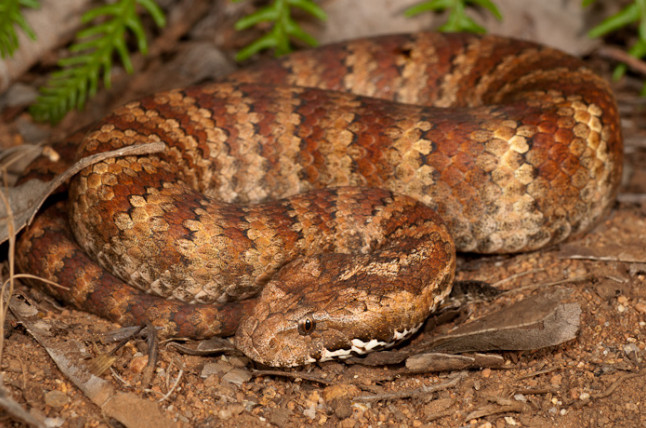
This dangerous snake belongs to the genus of deadly snakes of the asp family. She lives on the island of New Guinea and Australia. It is a nocturnal predator that prefers to hunt mammals, birds and other snakes. The viper-shaped deadly snake uses neurotoxic poison, which injects 40-100 mg into the victim. The viper-like deadly snake has an incredibly fast lunge - in just 0.13 seconds it is thrown out, bites and comes back.
After her bite, paralysis of the muscles, respiratory organs and depression of the heart develops, as a result of which a person can die within 6 hours. Every second bite of this snake leads to death.
3. Black mamba
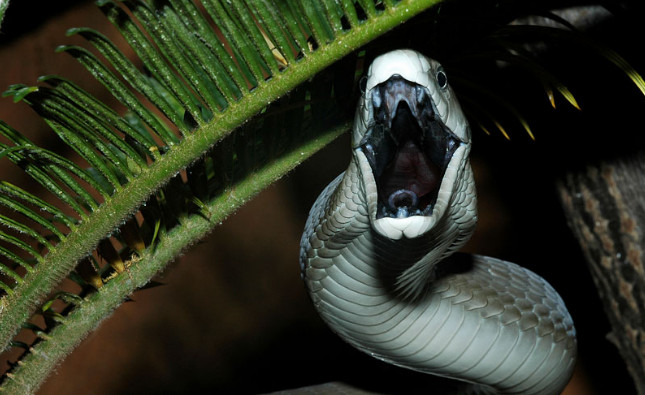
This is the most dangerous African snake from the asp family, although its poison is not record strong, but in every snake there is one to kill 10 people. This is the second longest venomous snake after the cobra, growing up to more than three meters. The black mamba is especially dangerous because of its sprint qualities - it can accelerate to speeds of over 11 km / h. In this case, an angry snake will attack the victim again and again (up to 12 times) and can replenish it with 400 mg of poison during this time. The snake itself can be colored in different ways - from olive to grayish, but in any case, its mucous mouth is always eerily black, which is where the name of the species comes from. Its habitats are savannas and rocky mountains of East and South Africa. She sleeps in open low spaces, cracks in rocks, hollows of trees, abandoned termite mounds.
If you do not provide a person with urgent help (within 20 minutes) after a black mamba bite, then he has practically no chance. Its poison causes uncontrollable vomiting, abdominal pain, convulsions, followed by paralysis and death. Terribly fearful Africans call this snake "the kiss of death". But in fairness, it should be noted that the black mamba is not aggressive and tries in every possible way to sneak away, and becomes dangerous only in a desperate situation. But even with all this, about 20 thousand people die every year in Africa from the bite of a black mamba.
The World Wildlife Fund is sounding the alarm - over the past 40 years, the number of animals on the planet has decreased by 60%. The main reasons for their extinction & ndas ...
4. Philippine cobra
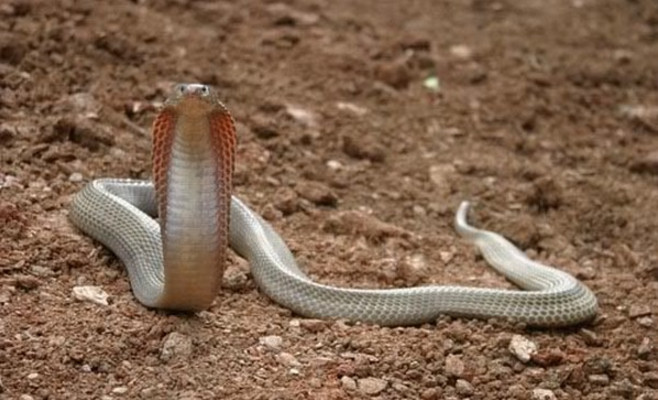
The classic image of a cobra is known to everyone due to the expanding ribs that form a kind of hood. Compared to other venomous snakes, they are not so dangerous, but not the Filipino variety. Its poison is strong in itself (stronger than that of other cobras), and a cobra can inject it in one bite up to 250 mg, and this is enough to send several people to heaven. Death can occur within half an hour after the bite, so often people simply do not have time to use long-established antidotes, since progressive paralysis of the muscles of the respiratory system is often impossible to stop. But the Filipino cobra is especially dangerous because it is capable of not only biting, but also precisely spitting poison in the eye from a distance of up to 3 meters.
5. Malay blue krait
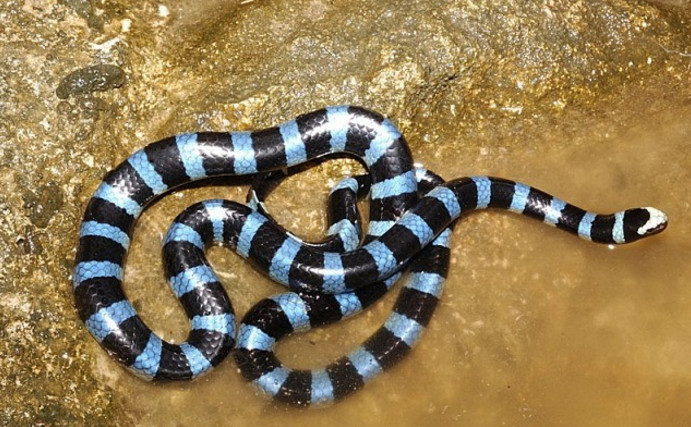
Living in Indonesia and Southeast Asia, the Malay blue krait has a poison 16 times stronger than that of the king cobra. Its poison contains a variety of toxins, so no universal antidote has been created for it.
The bite of the blue krait causes convulsions at first, then paralysis, and then 85% of those bitten die. We are lucky only that these snakes are nocturnal, so they rarely intersect with humans. In addition, unlike the same taipan, the blue krait is not so aggressive and seeks to dodge the skirmish and hide.
6. Tiger snake
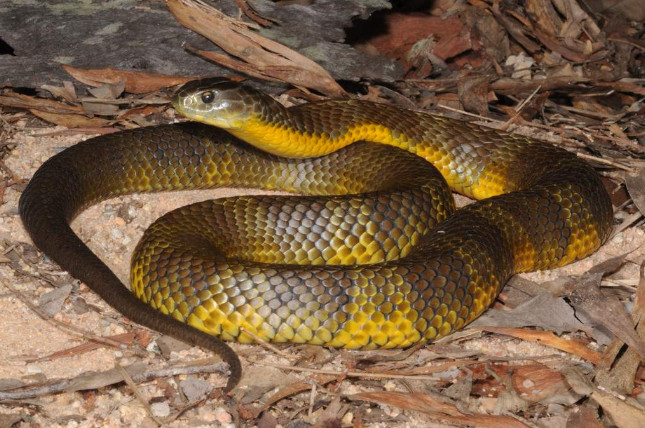
The tiger snake lives in Australia, Tasmania and New Guinea. It belongs to the family of asps, has wide transverse alternating yellow and gray rings - in the style of tiger, hence the name of the species.
These snakes have very strong venom, causing muscle paralysis, suppression of lung activity and death by suffocation. Bitten small animals often die right at the site of the bite, and when a person is bitten without using an antidote, up to 70% of those bitten die over the next day. Relief can be considered only the non-aggressiveness of the tiger snakes, which at every opportunity try to retreat, and attacking only in desperate situations.
The dog has long been included in the proverb about man's best friend, with which it is impossible not to agree. Dogs guard the owners and their property, help in the hunt ...
7. Rattlesnake
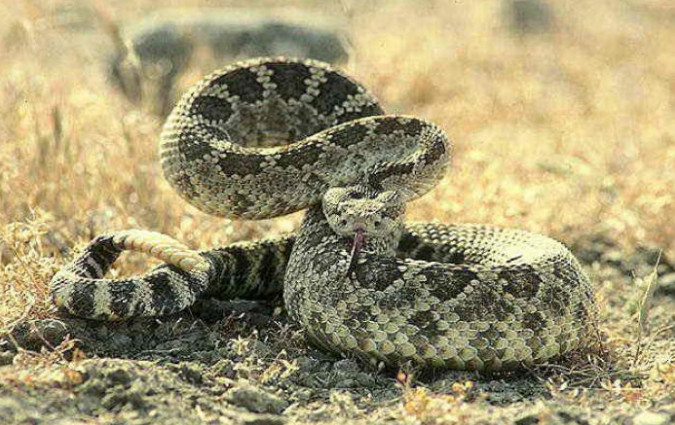
This type of snake is named so because it has keratinized scaly plates on its tail, shaking which at the moment of danger the snake emits a fairly loud specific crack. Actually, only two North American genera of pit vipers have such an apparatus, which include rattlesnakes, which are relatives of vipers. Pit-heads live in both Americas.
A person will not have too many chances to survive unless an antidote is quickly introduced after a rattlesnake bite. The eastern rattlesnake is considered especially poisonous, its range is made up of the territories of North Carolina and the south of the Florida Peninsula.
8. King cobra
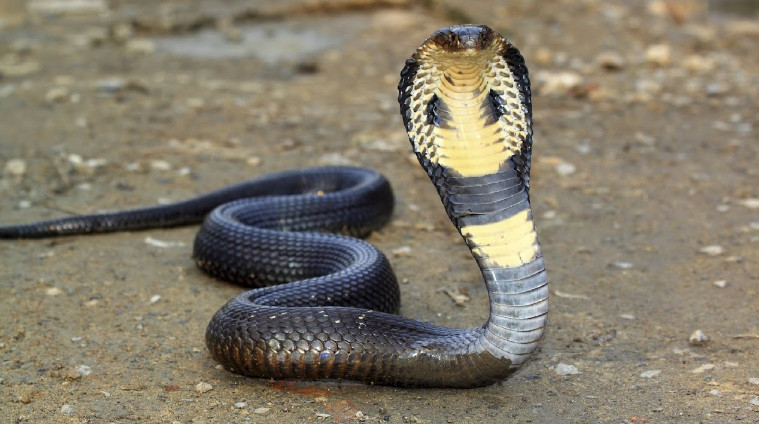
The largest of all venomous snakes is the king cobra or hamadryad. She belongs to the family of asps. On average, its size is 3-4 meters, but rare specimens grow up to 5.6 m.The king cobra lives in the tropical forests of Pakistan, India, Indonesia and the Philippines, and for a long time - over 30 years, without stopping its growth until death. The hamadryad is characterized by the ability to raise its head vertically and move in this position. They often live next to human habitation, as they feed on other snakes, and those, in turn, by numerous rodents, attracted by human crops.
This snake seems noble, because, as a rule, when it meets, it makes the first bite, not injecting poison, but in order to scare off the enemy, and only with a second bite it resorts to it. In fact, she's just saving her weapons. By the way, the king cobra does not have a very strong poison, but in large quantities. Basically, its venom has a neurotoxic effect. If you really have to bite, then the cobra is not stingy and pours in a gigantic amount of poison (up to 7 ml), which is guaranteed to kill a person in 15 minutes. In such cases, 3 out of 4 people die. But such cases are rare, so only 10% of hamadryad bites are fatal.
Cats are not always affectionate and friendly with people or other animals. Cat owners are more aware of these traits. List of the most dangerous ...
9. Sandy Efa
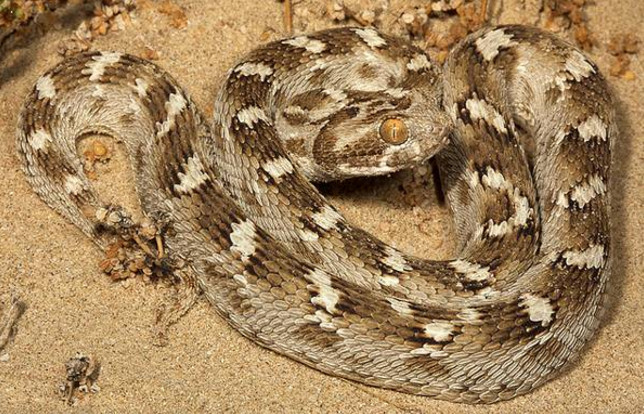
In the countries of Asia (on the Arabian Peninsula, in India, Sri Lanka and South-West Asia) and Africa, efes are found in sandy deserts and dry savannas. They become especially active after rain. These snakes have a decent speed and a special way of moving along the sand dunes.
The sandy ephae has a somewhat unusual poison that acts very slowly: from the moment of the bite, it can take 2-4 weeks before a person dies. The bite site begins to hurt in the first place, then the bitten limb swells, blood pressure drops and tissue necrosis begins. But with the timely administration of serum, a fatal outcome can be avoided. In sandy eff, they have a rather aggressive and irritable character. Moreover, their habitat is often in contact with the environment of human activity. Efs are active at night. They attack with lightning speed, injecting hemotoxin, which destroys red blood cells, as well as muscle and organ tissues. In general, mortality from an ephae bite is at a very high level.
10. Belcher's sea snake
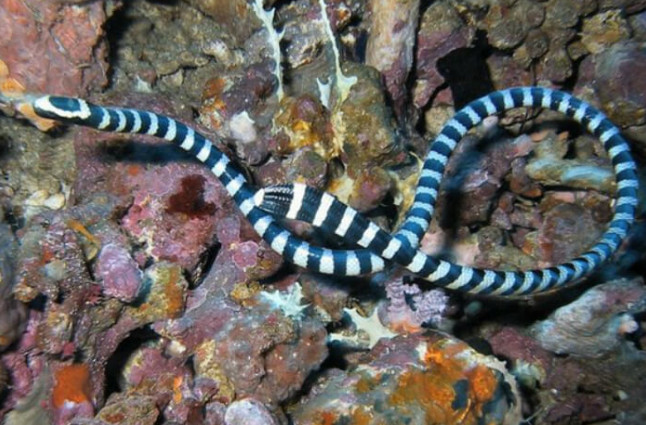
This is one of the most venomous sea snakes, whose venom has an LD50 index of 0.1 μg. She lives mainly in the waters of the warm Indian Ocean. But for humans, this snake, like most other sea snakes, is not too dangerous, since it does not show much aggression and is very tight-fisted in the sense of using its poison. Therefore, most sea snake bites do without tragic consequences for humans. To get the sea snake out of yourself and make it bite, you still need to try. The snake goes to extreme measures only when there is a real danger to itself.
A person may not feel the bite itself, but after a few minutes he begins to have convulsions, the nervous system and breathing are paralyzed, after which death occurs by suffocation.




